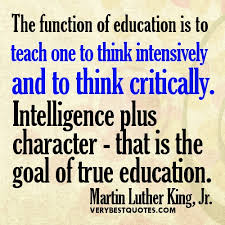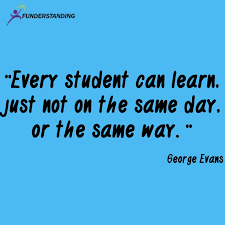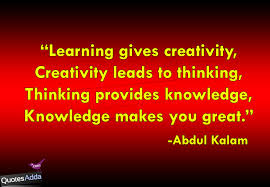Friday, September 26, 2014
Stressing Out!
Take a rest; a field that has rested gives a bountiful crop. *Ovid
Hannah dealt with her first college tests this week. She quickly learned how stressful they can be. She studied hard and will be glad when 2:00 comes today because she will be finished with her math test. This is the last one this week. But then, there's next week!
All this stress was stressing me out! My teachers were stressing too! But then, as teachers we are always stressing about many different things. We especially worry about out students and how to reach the ones who are struggling, the ones who need higher level activities, the ones with a not so great home-life, and the list goes on and on.
Stress can be many things to us. It can be anxiety, conflict, frustration. Recognizing stress and taking care of yourself is very important to your well-being.
Some indicators of stress are: perspiring more, hot and flustered, tense muscles, dry mouth, stomach knots, faster heart beat and quickened pulse. Some emotional indicators of stress are anxiety, fear, depression, anger, sadness, apprehension, and grief. Aggressiveness, avoidance, withdrawal, and irritability are a few of the behavioral indicators of stress.
Some ways to take care of yourself include taking a short break, relaxation exercises, taking a walk, sleep, and taking deep breaths. Some ways to be proactive about stress include visiting with your health care provider, talk to friends, get a good night's sleep, and regular exercise.
If you see someone stressing out then be a friend who will listen to them and help resolve problems the friend may be encountering. Organize meetings with others who are having similar stressful situations. It always helps to know there is a support group and you are not in it alone.
Yes, teaching is stressful, but rewarding. Just go down the hall, find a friend, and drive to the nearest Starbuck's. There's nothing like a great cup of coffee and friends to relieve stress!
Friday, September 19, 2014
Engaging Students: Think-Pair-Share

One of our district's initiatives this year is student engagement. Think-Pair-Share is a strategy that will engage the students and get them thinking on a higher level. It is designed to provide students with time and structure for thinking about a topic. The students will formulate different ideas and share these ideas with a peer. Instead of the teacher asking a question and calling on a student this strategy involves all the students by having them share with at least one student. This increases the student involvement in the learning. As students discuss their ideas, the teacher can walk around the room and listen to the students' conversations and give appropriate feedback.
In this strategy, the teacher asks a higher-level question, students have time to think individually about the question. Then, they work in pairs to discuss and solve the problem. Next, they share their ideas with the class. This strategy can be use on the spur-of-the-moment or as a planned activity.
To implement this strategy some preplanning needs to take place.
- The teacher must decide on the question/s that target key concepts that the students have been studying.
- Describe the think-pair-share strategy to the students. Give guidelines for discussion. Explain to the students that they think individually about a question or topic, pair with a partner, and share their ideas with the class.
- Have students model the procedures for using this strategy. The teacher should check for understanding of the procedures.
- The students should practice the strategy as the teacher monitors and supports students them.
- Students could also write or diagram their responses.
- Think: the teacher begins by asking a specific higher-level question. Students think about the question for about 1-3 minutes.
- Pair: The students are paired with another student. Pairs may be assigned or the students may pick their partner. Students share their thinking with their partner, discuss ideas, and ask questions about their partner's thoughts on the topic. Two to five minutes is usually the amount of time for the paired discussion.
- Share: After the paired discussing, the discussion is expanded to whole-group. Each pair selects the partner who will share their thoughts with the class. After the class shares the teacher may choose to have them get back in their pairs to see if their thinking changed as a result of the sharing time.
The following website has think-pair-share information. The chart below is a sample activity from the site that could be used with the student pairs.
I hope you will use this strategy! Happy teaching!
Friday, September 12, 2014

As I observed in ELA classrooms these past few weeks there has been a focus on plot and how it develops. I heard great discussions about this topic. In one classroom the teacher was making connections to movies the students had seen. Of course, the movies they had seen were all scary and I had not seen any of them (not a scary movie fan!) The students were very involved in the discussion and really started to understand the concepts of climax, resolution, etc. from making real life connections. Real life connections whether they are text to text, text to self, or text to world are very important. It gives the students something to "hang their hat on" and they can relate to what's happened in their lives. Connections stimulate their background knowledge and enhance comprehension. Connections are not just for ELA. When a student can make a real-life connection in math, science, social studies, and any other subject area it helps them understand the importance of what they are learning as well as helps them comprehend the topic. As teachers, try to help students activate these connections at every opportunity.
Plot is a very hard concept to teach and I have included two YouTube videos that help explain plot in a fun way.
I hope you have a wonderful week with lots of connections!
Friday, September 5, 2014
HMH Module Lessons Videos

Hannah is enjoying A&M. I miss her, but I am glad she is so happy. She especially enjoys her education class. She will be assigned a classroom in the area to observe. She is really looking forward to that.
All this started me thinking about the lessons she will observe. Then I started thinking about how I could pass some model lessons on to other teachers as well as Hannah. I searched and found a site on YouTube that had HMH model lessons. There are several lessons listed as you scroll down. I hope you find these lessons helpful. Happy Viewing!
http://www.hmhco.com/shop/education-curriculum/reading/core-reading-programs/journeys/features/teacher-model-lessons
Subscribe to:
Posts (Atom)